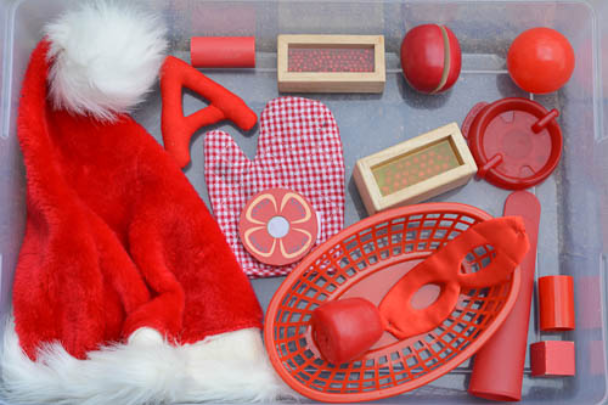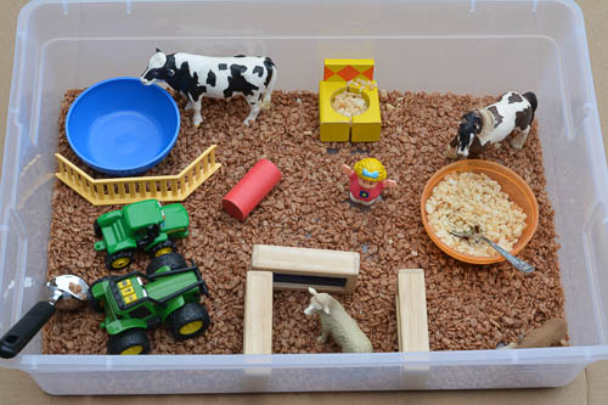Have you ever finished a favorite book with your child and she just wasn't ready to be "done" with the book? Extending your toddler's experience with a story using a sensory bin is a fun way to clock in more playful learning time.
What Is a Sensory Bin?
A sensory bin is a tactile experience of materials in an enclosed space. Typically, the enclosed space is a plastic bin. But, it could also be the bathtub or a cardboard shoe box.
The materials inside the container usually contain some type of filler such as water, sand, or even dry oats. Then, you add other elements for playful experiences such as toys, scoops, or recycled applesauce cups.
They can be messy or not.
Why Are Sensory Bins Good for Toddlers?
Little ones learn best through hands-on exploration. Everything in a sensory bin is meant to be touched and explored.
During sensory bin play, toddlers build oral language skills, increase their vocabulary bank, and develop fine motor strength.
How Do You Make & Use Sensory Bins?
Sensory bins are great because you can often use items from around the house. They are often based on a theme such as a color, a favorite interest, or as the examples below show, books.
First, you will want a container to hold the sensory bin. Plastic tubs work great because they have lids and can be stored easily when not in use.
Next, you need a filler. Here are some ideas that work with toddlers: water, sand, dry oats, cereal, fabric scraps, or rice. Please remember to only add items that will be safe for your child. Do not add anything that could be a choking hazard, and never leave your child unattended while playing with a sensory bin.
Finally, you are ready to add your playing pieces. Toys are great for role-playing. You'll also want to add spoons, scoops, or tongs for filling and moving things.
Sensory bins are meant to be open-ended. You create the bin as an invitation for your child. Step back and observe. You'll be amazed at the play and language you'll see and hear.
Storybook Inspired Sensory Bin Ideas
Below are some sensory bins inspired by favorite toddler books.







